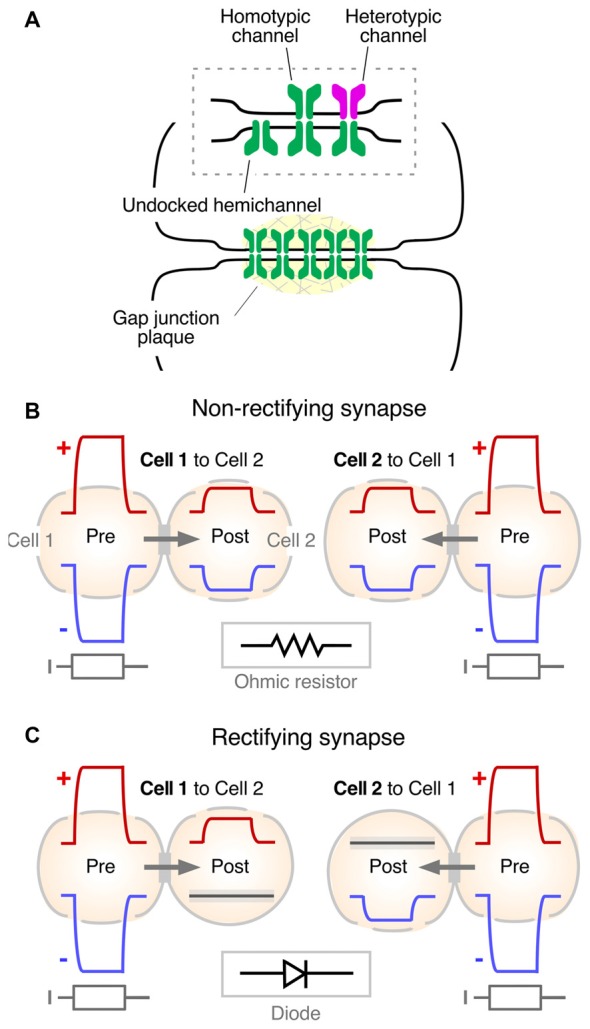Figure 3.

Synaptic communication mediated by gap junctions. (A) Gap junctions (Gap junction plaque) are groups of intercellular channels that provide a pathway of low resistance for the spread of electrical currents between two communicated cells. Inset: the intercellular channel is formed by the docking of two single channels (undocked hemichannel). The intercellular channel could be “homotypic,” at which both hemichannels are formed by the same gap junction channel-forming protein, or “heterotypic,” in which hemichannels are formed by different gap junction channel-forming proteins. Modified from Miller and Pereda (2017), with permission. (B) Non-rectifying electrical synapse. Both depolarizations (+, red traces) and hyperpolarizations (−, blue traces) evoked by intracellular current injection (I, gray traces) propagate to the postsynaptic cell in both directions (Cell 1 to Cell 2 and Cell 2 to Cell 1). Inset: the electrical behavior of most electrical synapses in physiological contexts correspond to that of an ohmic resistor (resistor symbol). (C) Rectifying synapse. Depolarizations, but not hyperpolarizations, propagate from Cell 1 to Cell 2. Conversely, hyperpolarizations, but not depolarizations, propagate from Cell 2 to Cell 1. Inset: in electrical terms, strongly rectifying electrical synapses behave as electric diodes (diode symbol).
